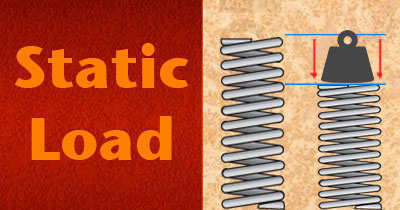

If both floors were not tested by ASTM F970, the results are likely not comparable.įor questions about static load limit testing and Armstrong Flooring testing methods, please contact Techline.The Static Load Test calculates the Safety Factor of the stem and roots of a tree during a storm using engineering principles. Make sure you understand how the flooring was tested before you compare results.

The decision on which flooring to choose, as it pertains to static load impact, shouldn’t just come down to which flooring is advertised as the highest PSI. There are no industry-wide accepted methods to evaluate dynamic loads, a common occurrence in day-to-day commercial applications. Alternatively, dynamic loads are created where a load is placed on the floor, and then moved around the floor's surface by a rolling, sliding, or dragging motion. Static load testing gently places load on the floor for a specific amount of time, gently removes the load at the end of the test, and then measures residual indentation after a period of resting time. Therefore, static load limit values are not a complete indicator of the product's installed performance.Īnother factor to consider is that static load testing differs from dynamic load testing, which can be more applicable in segments like education, healthcare, and retail. Additionally, testing does not take into account any contribution to indentation that could result from adhesives, patches, or underlayments. In accordance with ASTM methods, static load testing is currently performed on an uninstalled product, and the same test conditions used on an installed product may give very different results. Before you spec the product, make sure you have realistic expectations about recovery from indent. This type of testing is outside the scope of the test method, and published results often carry an asterisk to note the deviation.ĭoes this high PSI rating mean the floor will hold up better to heavy static loads? Not necessarily, but there’s a lot to consider. While ASTM F970 is the standard for the industry, it’s common to see modified tests where a much higher load was used.
#STATIC LOADING SERIES#
When making a final decision related to the durability of a product, static load limit is only one of a series of criteria that should be considered other criteria include resistance to scratches, stains and gouging.ĭoes a Higher Static Load Limit Rating Mean Better Protection?

This is the standard test method used by the flooring industry to determine the performance of the floor from a quality control standpoint. The measured and reported value - the depth of the depression after 24 hours of rest - must be less than 5 mils to pass ASTM F970.This load is applied for 24 hours on an uninstalled piece of product once time is up, the load is removed and the floor rests for 24 hours.Polyester Composition Tile (BBT): 250 PSI.It’s important to note that the method does not cite a static load requirement higher than 250 PSI for any product specification covering the category of resilient flooring.This method calls for a standard testing load in pounds per square inch (PSI), depending on the type of flooring.The purpose of this test is to determine how a floor recovers, or how much of an indent remains, after the specified load has been applied to an uninstalled floor for a specific period of time. To maintain quality standards that are uniform across the industry, manufacturers must design and construct flooring that tests and passes ASTM Test Method F970: Standard Test Method for Static Load Limit. What is the Standard for Static Load Limit Testing?


 0 kommentar(er)
0 kommentar(er)
